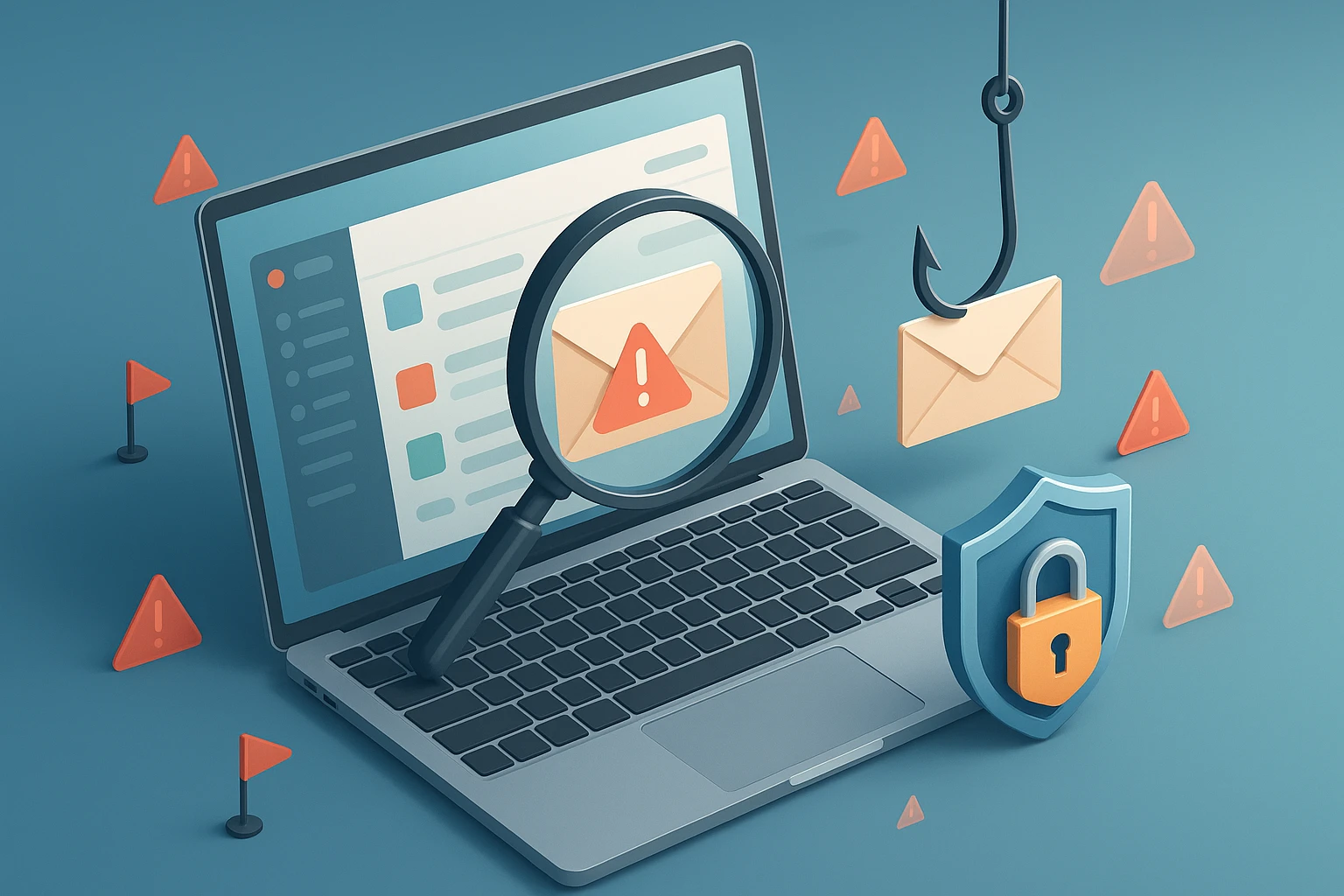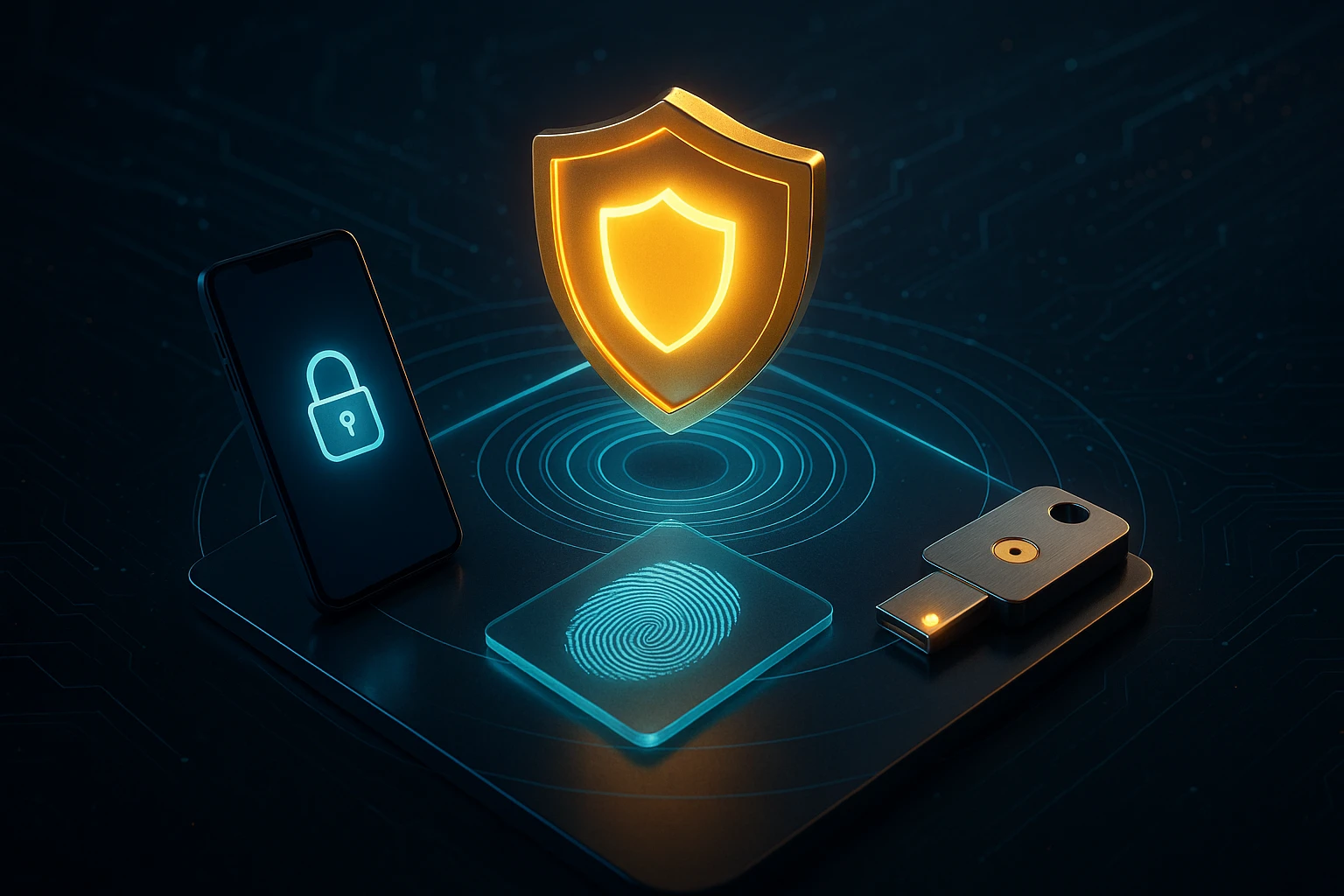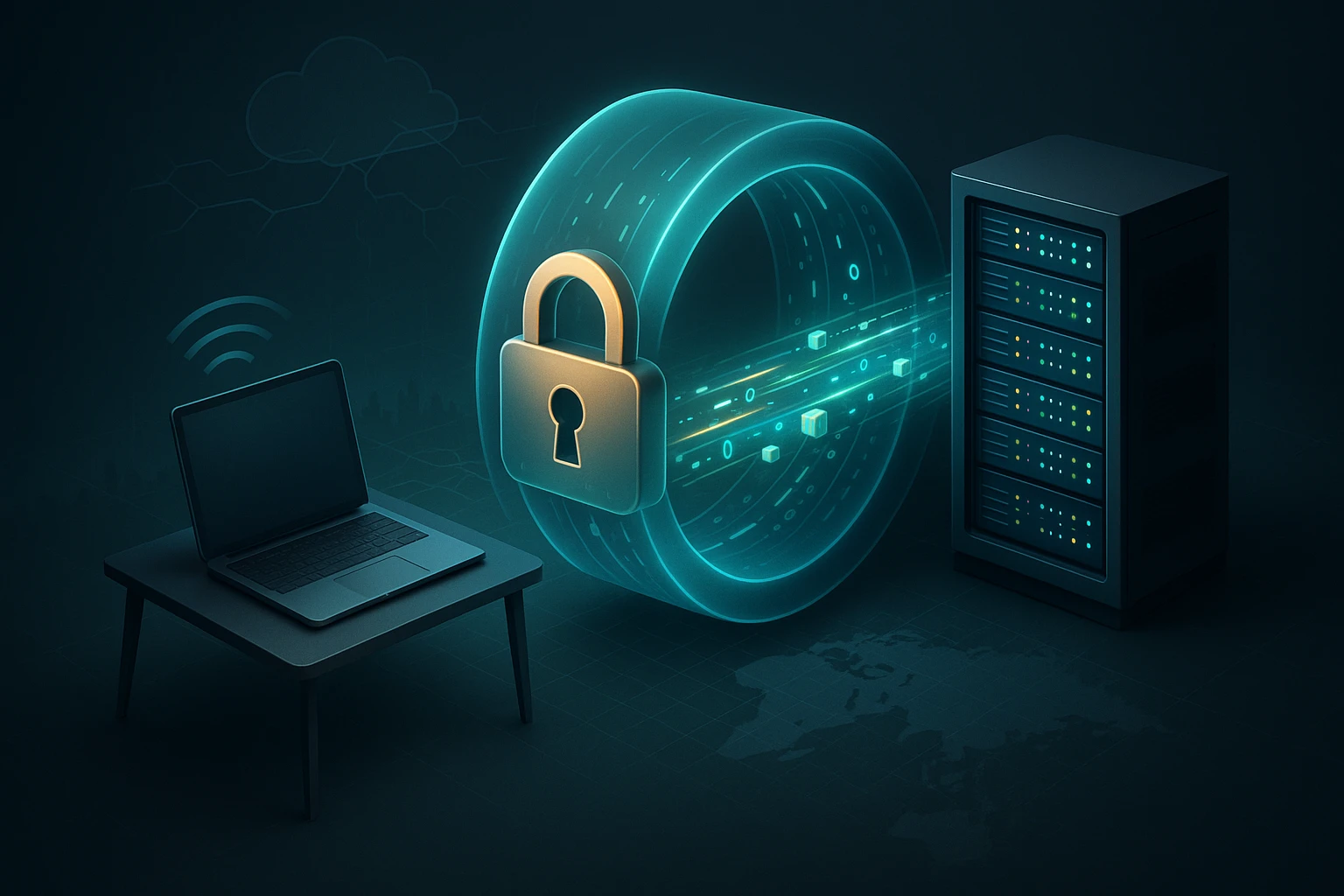How to Detect Phishing Emails
Graphic of phishing email signs: fake sender, urgent requests, unexpected links, misspellings, spoofed logos; guidance to verify sender, hover links, enable MFA, and report today..

How to Detect Phishing Emails
Every day, millions of people open their inboxes to find messages that appear legitimate but are actually sophisticated traps designed to steal personal information, financial data, or corporate credentials. These deceptive communications have evolved far beyond the obvious scams of the past, now mimicking trusted brands, colleagues, and even family members with alarming accuracy. Understanding how to identify these threats isn't just a technical skill—it's a fundamental aspect of digital self-defense that protects your identity, finances, and privacy in an increasingly connected world.
Phishing emails are fraudulent messages crafted to trick recipients into revealing sensitive information, clicking malicious links, or downloading harmful attachments. These attacks exploit human psychology rather than technical vulnerabilities, making them effective against even the most advanced security systems. This comprehensive guide examines the warning signs, psychological tactics, technical indicators, and practical strategies that empower you to recognize and respond to phishing attempts before they cause damage.
Throughout this resource, you'll discover the specific characteristics that distinguish legitimate correspondence from fraudulent messages, learn to analyze sender information and message content with a critical eye, understand the latest phishing techniques targeting individuals and organizations, and develop a systematic approach to email security. Whether you're protecting personal accounts or safeguarding business communications, these insights provide the knowledge needed to navigate your inbox with confidence and vigilance.
Understanding the Psychology Behind Phishing Attacks
Cybercriminals deliberately manipulate human emotions and cognitive biases to bypass logical thinking. These attacks succeed not because of technical sophistication alone, but because they exploit fundamental aspects of how people process information under pressure. Recognizing these psychological tactics is the first step toward building effective defenses against manipulation.
Attackers frequently create artificial urgency, claiming your account will be suspended, a payment is overdue, or immediate action is required to prevent negative consequences. This time pressure triggers stress responses that inhibit careful analysis and encourage impulsive decisions. Messages might warn of unauthorized access, suspicious activity, or expiring opportunities that demand instant attention.
"The most effective phishing emails don't rely on technical tricks—they exploit the natural human tendency to respond quickly when we feel threatened or excited about an opportunity."
Authority exploitation represents another powerful psychological lever. Phishing messages often impersonate executives, IT departments, government agencies, or trusted service providers. People naturally tend to comply with requests from perceived authority figures without extensive questioning, especially in professional contexts where hierarchical structures influence behavior patterns.
Curiosity and reward mechanisms also play significant roles. Emails promising unexpected refunds, prize winnings, exclusive access, or intriguing information about colleagues trigger dopamine responses that override caution. The prospect of gaining something valuable or learning secret information can cloud judgment and encourage risky clicking behavior.
Common Emotional Triggers Used in Phishing Campaigns
- ⚠️ Fear and anxiety - Threats of account closure, legal action, security breaches, or financial loss that create panic and discourage rational evaluation
- 🎁 Greed and opportunity - Promises of unexpected money, exclusive deals, lottery winnings, or investment opportunities that seem too good to pass up
- 👤 Trust and familiarity - Impersonation of known contacts, brands, or organizations that recipients already have established relationships with
- ⏰ Urgency and scarcity - Time-limited offers, immediate action requirements, or claims that opportunities will disappear if not acted upon instantly
- ❤️ Compassion and helpfulness - Appeals for assistance, charity requests, or situations where refusing seems callous or unprofessional
Analyzing Sender Information and Email Headers
The sender's address provides critical clues about message authenticity, yet this information is frequently overlooked or misunderstood. Email systems allow display names to show anything the sender chooses, meaning what appears as "PayPal Security Team" might actually originate from a completely unrelated address. Examining the actual email address rather than just the display name is essential.
Legitimate organizations use consistent, professional email domains that match their official websites. A message claiming to be from a major bank should come from an address ending in that bank's verified domain, not from generic services like Gmail, Yahoo, or obscure domains with slight misspellings. Attackers often register domains that closely resemble legitimate ones, substituting similar-looking characters or adding extra words.
| Legitimate Email Patterns | Suspicious Email Patterns |
|---|---|
| support@company.com | support@company-secure.com |
| noreply@bankname.com | noreply@bankname-verify.net |
| alerts@service.company.com | alerts@company.service-alert.com |
| notifications@brand.official.domain | notifications@brand.secure-login.info |
| team@recognizedcompany.com | team@recognizedcompany.support.tk |
Email headers contain technical information about message routing and authentication that most users never examine but which reveals valuable verification data. Accessing full headers varies by email client but typically involves viewing message options or properties. These headers show the actual path the message traveled, authentication results, and server information that can expose fraudulent origins.
Key Header Elements to Examine
SPF, DKIM, and DMARC authentication results indicate whether the sending server is authorized to send mail on behalf of the claimed domain. Failed authentication doesn't always mean phishing, as legitimate senders sometimes have configuration issues, but it warrants additional scrutiny. These technical standards help verify that messages genuinely originate from the domains they claim.
Return-Path and Reply-To addresses should match or logically relate to the sender's domain. When these differ significantly from the displayed sender address, it suggests the message may be fraudulent. Legitimate organizations maintain consistency across these fields, while phishing attempts often reveal discrepancies that expose their true origins.
"Always verify the actual email address, not just the display name. It takes five seconds and could save you from months of identity theft recovery."
Received headers trace the message's journey through various mail servers. Examining these can reveal whether a message claiming to be from a local colleague actually originated from another country or passed through suspicious intermediate servers. Geographic inconsistencies often indicate compromised accounts or spoofing attempts.
Examining Message Content and Language
Phishing emails often contain subtle language irregularities that distinguish them from legitimate correspondence. While sophisticated attacks have improved significantly, many still exhibit telltale signs in their writing style, formatting, and content structure. Developing sensitivity to these patterns enhances detection capabilities considerably.
Generic greetings like "Dear Customer" or "Valued User" instead of your actual name suggest mass-distributed messages rather than personalized communication from organizations that have your information on file. Legitimate companies typically address you by name in important correspondence, especially when requesting sensitive actions.
Grammar and spelling errors, awkward phrasing, or unusual word choices may indicate translation from another language or hasty composition. While legitimate emails occasionally contain typos, consistent language problems or unnatural sentence structures raise suspicion. Professional organizations employ editors and quality control processes that minimize such errors in official communications.
Content Red Flags That Signal Potential Phishing
- Requests for sensitive information - Legitimate organizations never ask for passwords, social security numbers, credit card details, or security codes via email
- Mismatched branding - Incorrect logos, outdated designs, wrong color schemes, or poor-quality graphics that don't match the company's current branding standards
- Vague or threatening language - Messages that create alarm without providing specific details about the supposed problem or account in question
- Unusual requests - Actions that don't align with normal business processes, like asking you to verify information the company should already have
- Inconsistent formatting - Mixed fonts, irregular spacing, alignment issues, or unprofessional layouts that suggest amateur creation
Legitimate organizations maintain consistent communication styles and follow established protocols. When a message deviates significantly from previous correspondence you've received from that entity, it warrants verification through independent channels before responding or taking requested actions.
Investigating Links and Attachments Safely
Links embedded in phishing emails represent one of the most dangerous elements, as they direct victims to fraudulent websites designed to steal credentials or install malware. The displayed link text often differs from the actual destination URL, creating a false sense of legitimacy. Understanding how to examine links without clicking them is a critical safety skill.
Hovering your cursor over a link without clicking reveals the true destination URL in most email clients and web browsers. This preview appears in a small popup or your browser's status bar. Compare this actual URL carefully against what you'd expect from a legitimate source. Even slight variations in spelling, domain extensions, or subdomain structures indicate potential threats.
"Never click links in unexpected emails, even if they appear to come from known contacts. When in doubt, navigate to the website directly through your browser or contact the sender through verified channels."
Attackers use various techniques to disguise malicious URLs, including URL shortening services that hide the true destination, homograph attacks using characters from different alphabets that look identical to Latin letters, and subdomain manipulation that places the legitimate brand name in a subdomain while the actual domain is malicious.
Safe Link Verification Practices
Rather than clicking links in suspicious emails, navigate directly to the organization's website by typing the known URL into your browser or using bookmarks you've previously saved. If the email claims there's an issue with your account, logging in through your normal method will reveal any genuine problems without risking exposure to phishing sites.
URL checking services and security tools can analyze links for known threats without requiring you to visit them directly. Many antivirus programs and browser extensions offer this functionality, scanning URLs against databases of reported phishing sites and malware distribution points. These tools provide an additional verification layer before making risky decisions.
| Legitimate URL Characteristics | Suspicious URL Characteristics |
|---|---|
| HTTPS with valid certificate | HTTP without encryption |
| Matches known company domain exactly | Slight misspellings or extra characters |
| Logical subdomain structure | Company name in subdomain with unfamiliar main domain |
| Standard domain extensions (.com, .org, .gov) | Unusual extensions (.tk, .ml, .ga) or multiple dots |
| Clean, professional URL structure | Excessive hyphens, numbers, or random characters |
Attachments pose similar risks, potentially containing malware, ransomware, or credential-stealing programs. Unexpected attachments from unknown senders should never be opened, but even attachments from known contacts warrant caution if they're unexpected or unusual. Compromised accounts frequently send malicious attachments to all contacts automatically.
Attachment Safety Guidelines
File type awareness is essential, as certain formats carry higher risks. Executable files (.exe, .bat, .scr), macro-enabled documents (.docm, .xlsm), and compressed archives (.zip, .rar) can contain hidden malware. Even seemingly harmless formats like PDFs can exploit vulnerabilities in reader software, though these attacks are less common.
Verify unexpected attachments through independent communication channels before opening them. If a colleague sends an unusual attachment, contact them via phone or a separate message system to confirm they actually sent it. Many phishing campaigns succeed because recipients assume familiar sender names guarantee safety.
Scan attachments with updated antivirus software before opening, even when they appear legitimate. Most security suites automatically scan downloads and attachments, but manually initiating scans provides additional assurance. Cloud-based scanning services can analyze files without requiring local downloads.
Recognizing Advanced Phishing Techniques
Cybercriminals continuously evolve their tactics, developing increasingly sophisticated approaches that bypass traditional detection methods. Understanding these advanced techniques helps maintain vigilance against threats that might otherwise appear legitimate even to cautious users.
Spear phishing targets specific individuals or organizations with customized messages containing personal details that increase credibility. Attackers research victims through social media, corporate websites, and data breaches, crafting emails that reference real projects, colleagues, or events. This personalization makes detection significantly more challenging than generic phishing attempts.
"The difference between regular phishing and targeted attacks is like the difference between junk mail and a forged letter from your bank manager—one is obviously suspicious, the other requires careful scrutiny."
Business Email Compromise (BEC) attacks impersonate executives or vendors to authorize fraudulent wire transfers, payroll changes, or sensitive data disclosures. These attacks exploit organizational hierarchies and established business processes, often succeeding because employees are trained to respond quickly to executive requests. The financial impact of BEC attacks exceeds billions of dollars annually.
Sophisticated Phishing Variations
Clone phishing involves creating nearly identical copies of legitimate emails previously sent by trusted organizations, with links or attachments replaced by malicious versions. Recipients who received the original message may assume the duplicate is a resend or follow-up, lowering their guard against the threat.
Whaling specifically targets high-value individuals like executives, politicians, or celebrities, using highly customized approaches that exploit their specific roles, responsibilities, and access privileges. These attacks often involve extensive reconnaissance and sophisticated social engineering to maximize success rates.
Conversation hijacking occurs when attackers compromise an email account and insert themselves into existing email threads, making their malicious messages appear as natural continuations of legitimate conversations. This technique leverages established trust relationships and contextual relevance to bypass suspicion.
Account compromise notifications ironically represent a common phishing vector, where fake security alerts claim suspicious activity on your account and request verification. These messages exploit security consciousness, turning protective instincts against victims by making them feel they're responding to genuine threats.
Implementing Verification Procedures
Establishing systematic verification processes transforms phishing detection from reactive pattern recognition into proactive security protocol. These procedures create consistent barriers between potential threats and harmful actions, reducing reliance on perfect vigilance in every moment.
Multi-channel verification involves confirming suspicious requests through different communication methods. When an email requests sensitive actions, contact the supposed sender via phone, instant message, or in-person conversation using contact information you already have, not details provided in the suspicious message. This simple step prevents countless compromises.
Organizational Verification Protocols
- Establish clear policies for handling sensitive requests, including required approval processes, verification steps, and escalation procedures that prevent single points of failure
- Create code words or phrases that executives and team members use to verify identity in unusual requests, particularly for financial transactions or data access
- Implement callback procedures requiring employees to verify unusual requests by calling known numbers rather than responding directly to emails
- Designate security contacts who can quickly assess suspicious messages and provide guidance without creating bottlenecks in legitimate operations
- Regular security briefings keep teams informed about current phishing trends targeting your industry or organization specifically
Technical verification tools complement human judgment by automatically flagging potential threats. Email filtering systems, anti-phishing extensions, and security awareness platforms provide additional detection layers. However, these tools should enhance rather than replace critical thinking, as attackers continuously develop methods to evade automated detection.
"Technology can flag suspicious emails, but human judgment makes the final call. The most secure organizations combine both approaches rather than relying exclusively on either."
Responding to Suspected Phishing Attempts
Appropriate response to identified or suspected phishing attempts limits potential damage and contributes to broader security efforts. Your actions after detecting suspicious emails can protect others and help security teams understand evolving threat patterns.
Immediate actions include not clicking any links or downloading attachments, not responding to the message, and not forwarding it to others who might accidentally engage with malicious content. If you've already clicked a link but haven't entered credentials, closing the browser window and running security scans can prevent compromise.
Reporting and Documentation Steps
Report to your organization's IT security team if the phishing attempt occurred in a work context. Security teams use these reports to identify campaigns targeting the organization, implement additional protections, and alert other employees about specific threats.
Forward phishing emails to relevant authorities such as the Anti-Phishing Working Group (reportphishing@apwg.org), the Federal Trade Commission (spam@uce.gov), or the impersonated organization's official security contact. These reports help track phishing campaigns and take down malicious infrastructure.
Mark messages as phishing or spam in your email client, which trains filtering algorithms to better identify similar threats in the future. Most email services use collective reporting data to protect all users, making your reports valuable beyond personal benefit.
Document the incident by taking screenshots and noting details like sender information, message content, and any actions you took. This documentation proves valuable if you later discover compromise or need to report identity theft.
If You've Been Compromised
Discovering you've fallen victim to phishing requires immediate action to limit damage. Change passwords for the affected account and any others using the same credentials, prioritizing financial accounts, email, and accounts with stored payment information. Enable multi-factor authentication wherever possible to add security layers beyond passwords.
Monitor financial accounts and credit reports for unauthorized activity. Contact your bank immediately if you've provided financial information, as they can freeze accounts, issue new cards, and monitor for fraudulent transactions. Consider placing fraud alerts or credit freezes to prevent identity thieves from opening new accounts in your name.
Run comprehensive malware scans if you downloaded attachments or visited suspicious websites. Some phishing attacks install persistent malware that continues stealing information after the initial compromise. Professional malware removal services may be necessary for severe infections that resist standard antivirus tools.
Building Long-Term Email Security Habits
Sustained security requires developing habits and practices that become automatic rather than conscious efforts. These behaviors create consistent protection against evolving threats without requiring perfect vigilance in every moment.
Maintaining healthy skepticism toward unexpected emails, even from known contacts, provides foundational protection. Questioning unusual requests, verifying information through independent channels, and pausing before clicking links or downloading attachments creates space for rational evaluation rather than emotional reaction.
Essential Security Practices
- 🔐 Use unique, complex passwords for each account, preferably managed through reputable password managers that generate and store credentials securely
- 📱 Enable multi-factor authentication on all accounts that support it, adding verification layers that prevent access even if passwords are compromised
- 🔄 Keep software updated including operating systems, browsers, email clients, and security tools to patch vulnerabilities that phishing attacks might exploit
- 📚 Stay informed about current threats through security blogs, organizational training, and awareness of phishing trends targeting your industry or demographic
- 🎓 Educate others by sharing knowledge with family, friends, and colleagues, creating communities of awareness that protect vulnerable individuals
Regular security training reinforces best practices and introduces new threat awareness. Organizations should provide ongoing education rather than annual compliance exercises, incorporating real-world examples and interactive scenarios that develop practical skills. Personal users benefit from following security researchers and news sources that highlight emerging threats.
"Security isn't a one-time achievement but an ongoing practice. The habits you build today protect you from threats that don't even exist yet."
Technical Tools and Security Solutions
While human awareness remains the primary defense against phishing, technical tools provide valuable support by automating detection, blocking known threats, and alerting users to potential dangers. Understanding available solutions helps build comprehensive security strategies.
Email filtering systems analyze incoming messages for phishing characteristics, blocking obvious threats before they reach inboxes and flagging suspicious messages for review. These systems use machine learning, reputation databases, and content analysis to identify potential phishing attempts with increasing accuracy.
Recommended Security Tools
Anti-phishing browser extensions warn when you attempt to visit known phishing sites, checking URLs against constantly updated databases of reported threats. These extensions work across different websites and email clients, providing consistent protection regardless of how you access content.
Email authentication protocols like SPF, DKIM, and DMARC help receiving servers verify message authenticity. Organizations implementing these standards make it harder for attackers to spoof their domains, while users can check authentication results to verify sender legitimacy.
Security awareness platforms simulate phishing attacks to test and train users, providing immediate feedback and education when employees fall for simulated threats. These platforms help organizations measure security culture and identify individuals or departments needing additional training.
Password managers prevent credential theft by automatically filling login forms only on legitimate websites. Since password managers recognize authentic sites by their actual URLs rather than visual appearance, they won't fill credentials on phishing sites designed to look like legitimate services.
Virtual private networks (VPNs) and secure DNS services add layers of protection by encrypting internet traffic and blocking access to known malicious domains. These tools complement email security by protecting broader online activities that phishing attacks might target.
Understanding Industry-Specific Phishing Threats
Different industries face unique phishing challenges based on the types of information they handle, regulatory requirements they must meet, and typical communication patterns. Recognizing sector-specific threats enhances detection capabilities for those working in or interacting with these fields.
Financial services experience constant phishing pressure due to direct access to money and valuable financial data. Attacks often impersonate banks, investment platforms, payment processors, or regulatory agencies, requesting account verification, transaction confirmation, or compliance documentation. The high value of financial credentials makes this sector a perpetual target.
Healthcare Phishing Characteristics
Healthcare organizations face phishing attacks targeting electronic health records, insurance information, and prescription systems. Attackers exploit the sensitive nature of medical data and the urgency often associated with healthcare communications. Messages might claim to contain test results, appointment confirmations, or insurance updates requiring immediate attention.
HIPAA compliance requirements create additional complexity, as healthcare workers must balance security vigilance with patient care responsibilities. Phishing attacks sometimes exploit this tension by claiming urgent patient needs that require bypassing normal verification procedures.
Retail and E-commerce Vulnerabilities
Retail organizations and their customers face phishing attempts related to order confirmations, shipping notifications, account security, and payment processing. Attackers exploit the high volume of legitimate transactional emails in this sector, making fraudulent messages easier to hide among authentic communications.
Seasonal patterns increase vulnerability during high-volume periods like holidays when customers expect numerous shipping notifications and deal alerts. Attackers time campaigns to coincide with these periods when vigilance naturally decreases due to message volume.
Legal and Regulatory Considerations
Understanding legal frameworks surrounding phishing helps organizations develop compliant security programs and individuals recognize their rights and responsibilities. Regulatory requirements vary by jurisdiction and industry but generally emphasize data protection and breach notification.
Data protection regulations like GDPR, CCPA, and industry-specific standards require organizations to implement reasonable security measures protecting personal information. Falling victim to phishing attacks that compromise customer data can result in significant fines, legal liability, and reputational damage beyond the immediate technical impact.
Organizational Responsibilities
Companies must provide security awareness training, implement technical controls, establish incident response procedures, and maintain documentation demonstrating compliance efforts. Failure to meet these obligations can result in regulatory penalties even if attacks ultimately fail due to other security layers.
Breach notification requirements mandate timely disclosure when phishing attacks successfully compromise personal information. These notifications must reach affected individuals, regulatory authorities, and sometimes media outlets depending on breach severity and jurisdiction. Proper incident response planning ensures organizations meet these obligations despite the stress of active security incidents.
Future Trends in Phishing Attacks
Phishing continues evolving as attackers adopt new technologies and adapt to improving defenses. Understanding emerging trends helps prepare for future threats rather than only defending against current techniques.
Artificial intelligence enables more sophisticated phishing campaigns by automating personalization, generating convincing content, and adapting messages based on victim responses. Machine learning algorithms can analyze social media profiles, public records, and previous interactions to craft highly targeted messages that traditional approaches couldn't achieve at scale.
Deepfake technology introduces new dimensions to phishing by creating convincing audio and video content impersonating executives, colleagues, or family members. These synthetic media attacks can bypass verification procedures that rely on voice recognition or video calls, requiring new authentication approaches beyond traditional methods.
"As security defenses improve, attackers don't give up—they innovate. Staying ahead requires continuous learning and adaptation, not just implementing defenses and assuming they'll remain effective indefinitely."
Mobile-focused phishing increases as smartphone usage grows and mobile security lags behind desktop protections. Smaller screens make URL verification harder, mobile operating systems provide fewer security indicators, and users often check email in distracting environments that reduce careful evaluation. Attackers increasingly target mobile platforms specifically rather than treating them as secondary channels.
Supply chain attacks compromise trusted vendors or service providers to distribute phishing messages through legitimate channels. When attackers breach marketing platforms, help desk systems, or communication tools, their phishing emails arrive through genuinely authorized systems, bypassing many technical defenses and exploiting established trust relationships.
What should I do immediately after clicking a phishing link?
Close your browser immediately without entering any information, disconnect from the internet to prevent malware communication, run a full antivirus scan, change passwords for potentially affected accounts using a different device, enable multi-factor authentication, and monitor financial accounts for suspicious activity. Contact your IT security team if this occurred on a work device.
Can phishing emails infect my computer without clicking anything?
While rare, certain vulnerabilities in email clients can allow malicious code execution simply by opening or previewing messages. Keeping software updated patches these vulnerabilities. However, most phishing attacks require you to click links or download attachments to cause harm. Preview panes in email clients generally render messages safely, though disabling automatic image loading adds extra protection.
How can I verify if an email claiming to be from my bank is legitimate?
Never click links in the email. Instead, navigate directly to your bank's website by typing the URL or using a saved bookmark, then log in to check for messages or alerts. You can also call your bank using the phone number on your debit card or official statements—not numbers provided in the suspicious email. Banks typically never request sensitive information via email.
Are there specific times when phishing attacks increase?
Phishing campaigns often spike during tax season, major shopping holidays, back-to-school periods, and following major data breaches or news events. Attackers exploit times when people expect to receive numerous legitimate emails and may be less vigilant. Monday mornings also see increased phishing activity as attackers target workers returning to full inboxes after weekends.
What makes someone more vulnerable to phishing attacks?
Factors include lack of security awareness training, high stress levels, multitasking while checking email, using mobile devices with limited security indicators, having publicly available personal information, working in high-value industries like finance or healthcare, and trusting nature or reluctance to question authority. However, anyone can fall victim to sufficiently sophisticated attacks, making vigilance important regardless of technical expertise.
How do I report phishing emails to help protect others?
Forward suspicious emails to your organization's security team, report them to the Anti-Phishing Working Group at reportphishing@apwg.org, send copies to the Federal Trade Commission at spam@uce.gov, and report to the impersonated company's official fraud department. Most email providers also have built-in reporting features that help improve filtering for all users. Your reports contribute to databases that protect millions of people.
Can two-factor authentication protect me if I enter credentials on a phishing site?
Two-factor authentication significantly improves security but isn't foolproof against phishing. Some sophisticated attacks use real-time proxy methods to capture both passwords and authentication codes, immediately using them to access accounts. However, 2FA still blocks most phishing attempts and prevents credential stuffing attacks using stolen passwords. Hardware security keys provide stronger protection than SMS or app-based codes.
Why do phishing emails often have grammar and spelling mistakes?
While some errors result from poor translation or hasty composition, some attackers intentionally include mistakes to filter for more gullible victims. People who overlook obvious errors may be less likely to recognize other warning signs, making them easier targets. However, increasingly sophisticated phishing campaigns feature perfect grammar and professional formatting, so well-written emails aren't necessarily legitimate.




